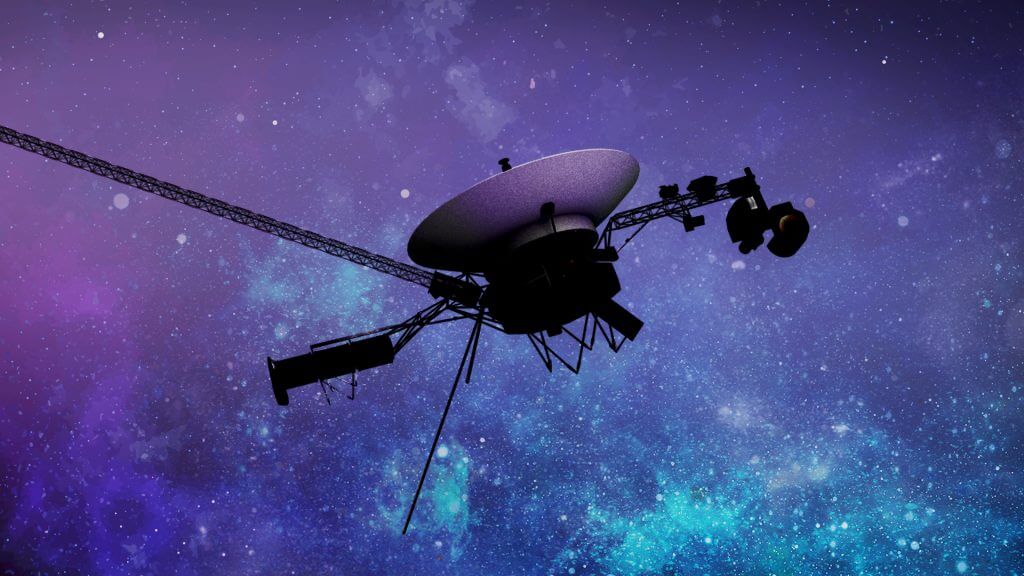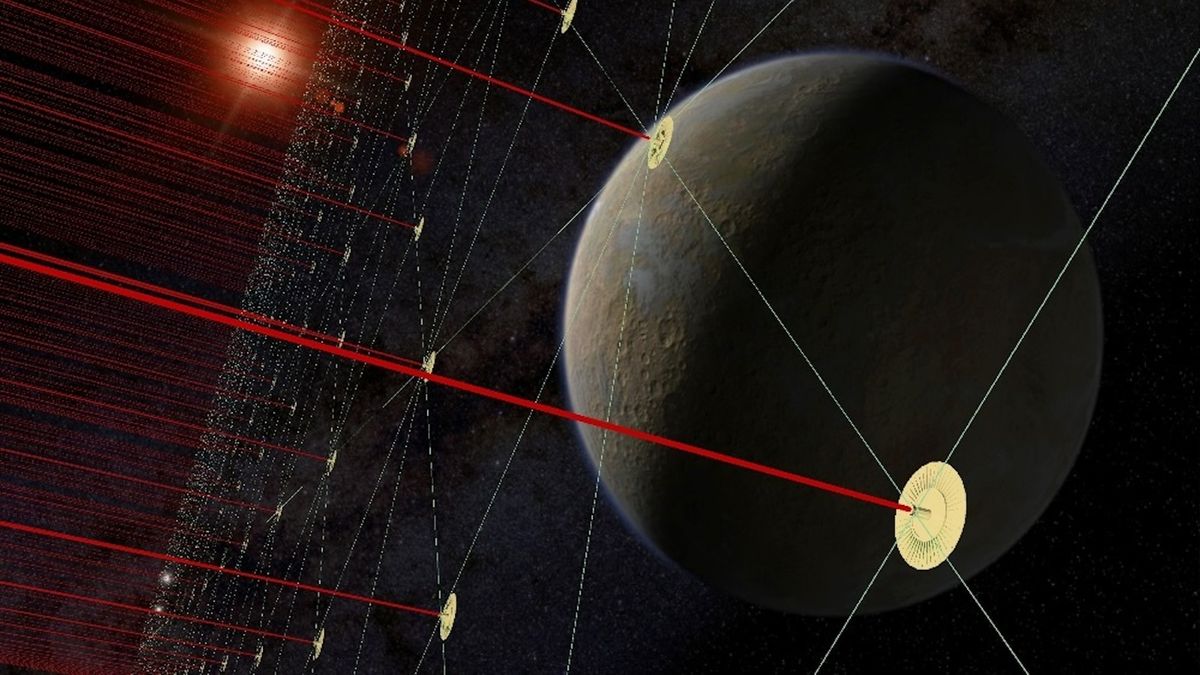A planetary probe launched by the National Aeronautics and Space Administration (NASA) in 1977.Voyager 1(Voyager 1)” has been experiencing an issue transferring unreadable data since November 2023.
Regarding this problem, NASA published on its official blog on April 4, 2024,It has been determined that the problem is caused by a corruption of part of the computer's memory.It has been announced. Although it may take weeks or months to solve the problem, NASA is optimistic that a way can be found to recover the data without going through corrupted memory.

■Voyager 1, 46 years after its commissioning
Even after completing its planned exploration of Jupiter and Saturn, NASA's Voyager 1 planetary probe continues to transmit valuable scientific observational data about the outer solar system. Sending a new probe into deep space is expensive and time-consuming, so efforts are underway to keep Voyager 1 operational for as long as possible.
However, the output of the nuclear battery (radioisotope thermoelectric converter) installed as a power source continues to decline, and NASA's “Deep Space Network” communications network that communicates with distant spacecraft, however, is expected to end the Voyager 1 mission. Sometime between 2025 and 2025. 2036, 46 years after its beginning, when the signal becomes so weak that it becomes impossible to communicate with it.
In addition, Voyager 1, which has been in operation for nearly half a century, has gradually deteriorated, and this has sometimes caused problems in its operational status. In May 2022, a problem occurred where a meaningless signal was being sent, indicating that the Attitude and Expression Control Subsystem (AACS) had stopped working years ago, and it was determined that the reason was that sending data via the on-board computer was generating meaningless signals. .
It may be difficult to convey just by writing this way, but it is difficult to pinpoint and resolve problems occurring on Voyager 1, an ancient system built using half-century-old technology. A command sent to solve one problem can lead to another fatal problem, so to avoid unexpected results, you should read the huge amount of material written at that time. In addition, Voyager 1 is currently approximately 24 billion kilometers from Earth, and it takes a sender about 22.5 hours to reach Voyager 1, and about 45 hours to receive a response even if the response is returned immediately. It takes a long time to determine the cause and deal with it.
Related articles
・Problems have been found with some data sent to Earth by the Voyager 1 planetary probe, which celebrates its 45th anniversary (May 20, 2022)
・Resolved an issue with some data from NASA's interplanetary probe Voyager 1 (August 31, 2022)
■A problem occurred where unintelligible data was sent from FDS.
![[▲ الشكل 2: الصورة الخارجية لـ FDS المثبتة على Voyager (مصدر الصورة: NASA-JPL)]](https://sorae.info/wp-content/uploads/2024/04/2024-04-08-Voyager-FDS-02.jpg)
![[▲ الشكل 2: الصورة الخارجية لـ FDS المثبتة على Voyager (مصدر الصورة: NASA-JPL)]](https://sorae.info/wp-content/uploads/2024/04/2024-04-08-Voyager-FDS-02.jpg)
About 1 year and 4 months after the AACS problem was resolved, NASA announced in a post on its official blog dated December 12, 2023 that another problem had occurred with the Voyager 1 communication content. It was announced.
The problem occurred on one of the three computers in Voyager 1.Flight data system(FDS: Flight Data System). The FDS transmits scientific data observed by Voyager 1 and engineering data related to the spacecraft's condition to Earth via a subsystem called the Telemetry Modulation Unit (TMU).
However, Voyager 1's TMU will begin operating in November 2023.Meaningless binary data with repeated 0's and 1'sHe was sending. The technical team determined that the problem was not caused by TMU but by FDS, and tried to restart FDS to return to the state it was in before the problem occurred, but the problem remained. Therefore, the technical team set about investigating the cause, taking into account the possibility that the problem occurred in a more fundamental part.
Related articles
・There has been a problem with part of NASA's Voyager 1 planetary probe computer, which will take several weeks to fix (December 13, 2023)
■ The cause was determined to be a partially damaged chip.
Regarding this topic, NASA announced in a post on its official blog on March 13, 2024 that it had received read data for the entire memory that makes up the FDS system. This data was received on March 3 of the same year after sending a command called “poke” on March 1 of the same year to execute another sequence in the program in case a problem occurred in executing the FDS sequence, which it did.
The Voyager mission team was initially unable to interpret the data received because it was in a different format than regular FDS data. However, when the Deep Space Network's technical team decrypted it, it was discovered on March 10 of the same year that it contained a readout of the entire FDS memory, including FDS code, variables, and scientific and engineering data. As a result, it is now possible to determine where the problem occurred in the FDS by comparing it to the FDS data before the problem occurred.
In a post on its official blog dated April 4 of the same year, NASA announced that it had found that approximately 3% of the FDS memory was damaged, making it unable to perform normal operations. The cause of the damage wasOne of the chips that make up the memory is not workingPresumably this is because of this. Although the cause of the outage is unknown, it is thought it may be due to aging after 46 years of operation, or physical destruction caused by high-energy particles such as cosmic rays.
Now that the cause has been identified, the technical team is looking for a way to read data from the FDS without going through unusable memory to solve the problem. It could take weeks or months, but NASA is optimistic that a fix can be done.
source
- Naomi Hartono. “Engineers determine the cause of Voyager 1’s problem and are working on a solution.” (NASA)
- Dennis Hale. “NASA engineers make progress toward understanding Voyager 1 problem”. (NASA)
- Miles Hatfield. “Engineers work to solve Voyager 1 computer problem.” (NASA)
Text / Riri Ayaka Editing / sorae editorial department

“Travel maven. Beer expert. Subtly charming alcohol fan. Internet junkie. Avid bacon scholar.”






More Stories
VALORANT consumer open beta begins today. Enjoy the popular tactical shooter on PS5 and Xbox Series X|S
CGWORLD Volume 313 Pre-Announcement (September 2024 Release), “Let's Jump into VRChat Special Edition!”
It's better to call it a digital camera. The Xperia 1 VI lets you take any kind of photo | Gizmodo Japan